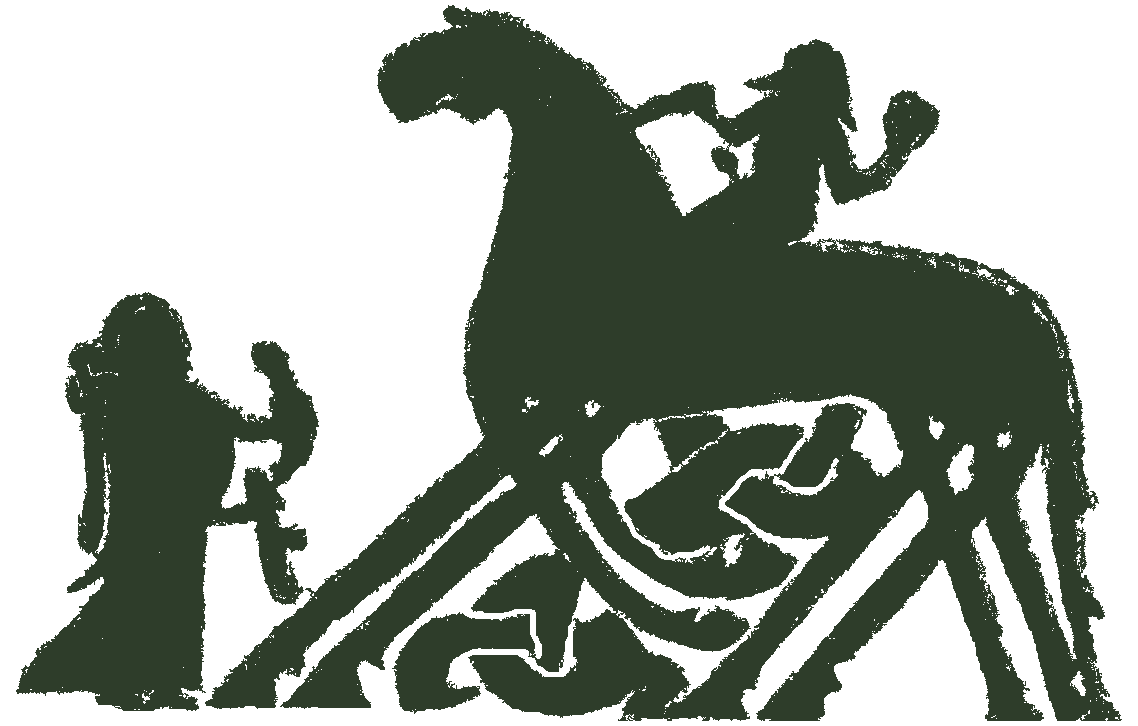2. The “Histories and Structures” Strand
This is not currently part of the peer-reviewed material of the project. Do not cite as a research publication.
One of the major reasons for the initiation of the Pre-Christian Religions of the North project is the lack of a detailed, up-to-date English-language synthesis (a Stand der Forschung) in the field. Although there are a number of popular works dealing with “Norse” mythology and religion available, the scholarly works that provide broad coverage of the topic – primarily the 1956 German-language Altgermanische Religionsgeschichte of de Vries, and Turville-Petre’s 1964 Myth and Religion of the North – have become badly outdated in both their theoretical standpoints and their scope due to the advances made in both archaeology and our understanding of early medieval culture over the last half a century.
It is this lack that the “Histories and Structures” Strand of the project aims to address, by producing a three-volume analysis of the religious systems attested by textual and archaeological sources. In short, the volumes produced by this strand of the project will seek to understand – as far as is possible – the original religious beliefs and practices of pre-Christian Europe, which today survive only in fragmentary and often contradictory textual accounts and confusing archaeological data. Indeed, the near-total reliance of previous syntheses on written accounts – often of dubious value or reliability – has lead to the decision to conceive the “Histories and Structures” Strand (and the entire project) as wholly interdisciplinary from the offset: the editorial team of this strand consists of an archaeologist (Anders Andrén, of the University of Stockholm), a historian of religion (Jens Peter Schjødt, of the University of Århus), and a textual scholar (John Lindow, of the University of California, Berkeley) working in concert to combine their own work with that of around 15 authors into a single coherent analysis. Their liaison to the Executive Board is Ingunn Ásdísardóttir (of the Reykjavík Academy).
This strand will also move away from the traditional structure of studies of northern mythology, which tend to group together evidence for any given phenomenon (be that beliefs in the god Thor, rituals of human sacrifice, or concepts of the afterlife) with little or no regard for the geographical or temporal provenance of the material. By avoiding such pitfalls, it is hoped that the creation of false “universal” pictures of religious beliefs and practices can be avoided, and the huge variety and individuality of pre-Christian religions across Northern Europe faithfully represented. As such, the traditional range of topics considered will be expanded to include subjects not typically regarded as “religious”, with chapters on Landscape and Settlement, Law and Assemblies, Politics, Gender, Kings and Kingship, Warrior Society, and Ethics and Honour in addition to more traditional subjects such as Cosmology, the belief in individual deities, and Ancestor Worship.
The editors spent 2013 at the Swedish Collegium for Advanced Study in Uppsala on residential research fellowships, from where they coordinated the drafting of much of the Strand’s output. As of the end of the year, much of the Strand’s output has already been drafted, and a solid framework for the completion of the remainder is in place. Given the longevity of the works this strand of the project is designed to replace, and the continuing popularity of works seeking to understand the “heathen” religions of Northern Europe, the “Histories and Structures” Strand of the Pre-Christian Religions of the North project will undoubtedly prove of great importance and value to both dedicated scholars and the interested public alike.
